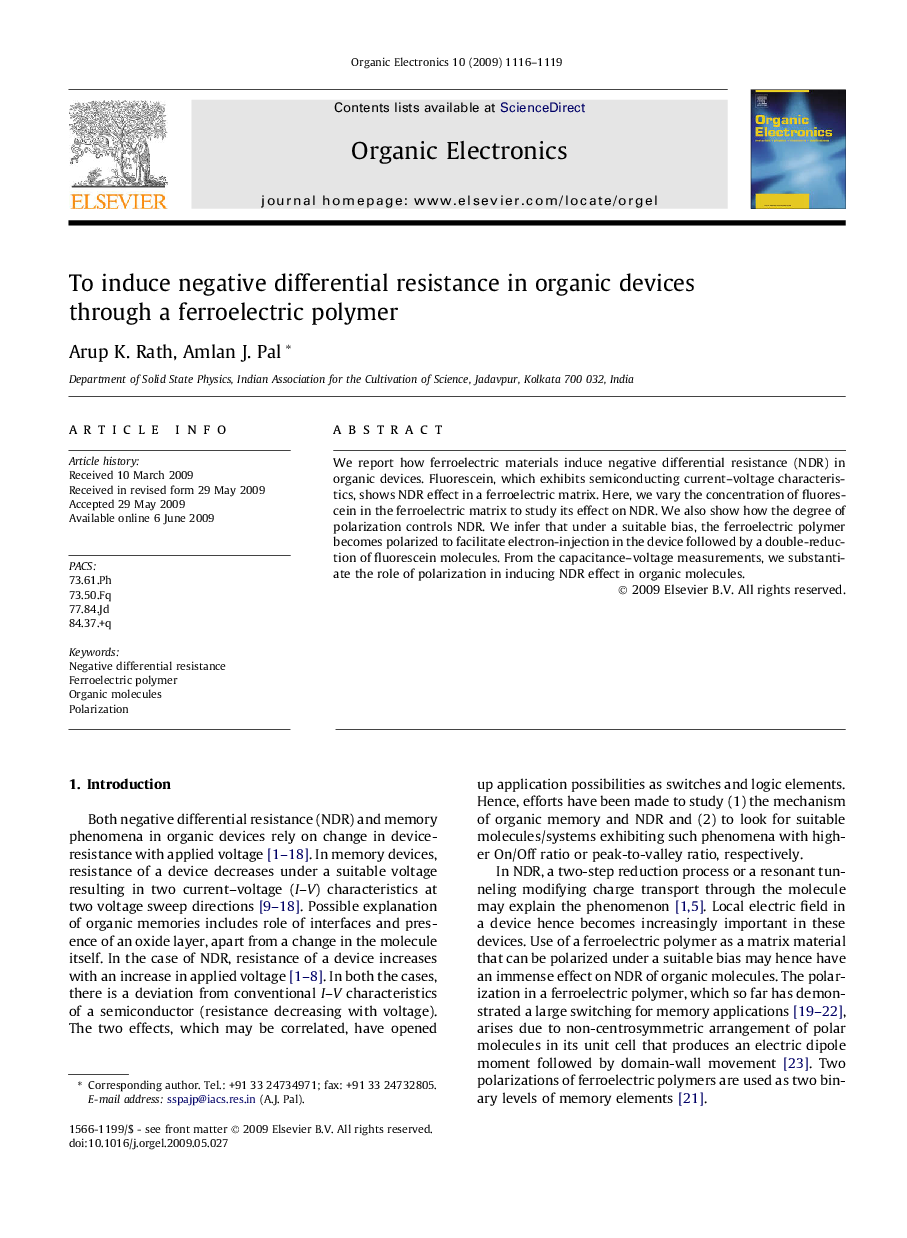| Article ID | Journal | Published Year | Pages | File Type |
|---|---|---|---|---|
| 1265020 | Organic Electronics | 2009 | 4 Pages |
Abstract
We report how ferroelectric materials induce negative differential resistance (NDR) in organic devices. Fluorescein, which exhibits semiconducting current-voltage characteristics, shows NDR effect in a ferroelectric matrix. Here, we vary the concentration of fluorescein in the ferroelectric matrix to study its effect on NDR. We also show how the degree of polarization controls NDR. We infer that under a suitable bias, the ferroelectric polymer becomes polarized to facilitate electron-injection in the device followed by a double-reduction of fluorescein molecules. From the capacitance-voltage measurements, we substantiate the role of polarization in inducing NDR effect in organic molecules.
Keywords
Related Topics
Physical Sciences and Engineering
Chemistry
Chemistry (General)
Authors
Arup K. Rath, Amlan J. Pal,
